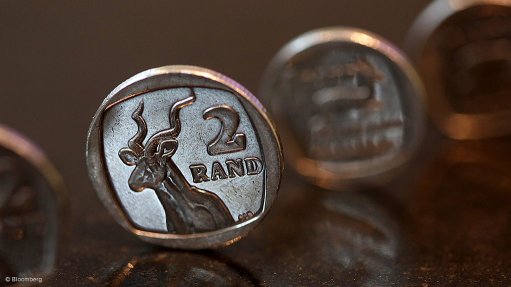A reflection on latest IRP iteration
The Integrated Resource Plan (IRP) is a government plan that supposedly sets out the future development of the South African electricity generation system.
In theory, government passes the plan around for comment by industry and municipalities and everybody agrees, after which government policy is driven by the plan.
Energy Minister Jeff Radebe has just released the 2018 IRP. By 2030, government envisages that the energy mix will consist of 34 000 MW of coal, representing 46% of installed capacity; 11 930 MW of gas, or 16% of installed capacity; 11 442 MW of wind, or 15% of installed capacity; 7 958 MW of solar photovoltaic (PV); and 4 696 MW of hydropower, or 6% of installed capacity.
Compared with existing installations, this means that there will be 3.9 times more gas turbine capacity, 5.4 times more wind power capacity and 5.4 times more solar power capacity. I note that there will be enough gas turbine capacity to completely back up the wind capacity for those still, calm nights, such as right now.
And nuclear – that dependable power source which requires no backup at all? Well, an increase of 1 000 MW over 12 years. Virtually nothing.
Turning to wind power, recall that the wind only blows on the Cape West Coast and South Coast and, to some extent, in the Eastern Cape. So, the scenic views in these places will diminish to 20% of what is the case now, with those cute little 150-m-high towers providing visual references to the sweep of the bay and the rocky headlands. An’ all. The number of birds being chopped to bits will increase five times. This hardly matters when the wind energy people say only about two birds are killed each year by turbines, and, anyway, they had just lost their way. They also say that way more birds are killed by cats each year. Good point but wrong bird – I have yet to see any moggy take down a Cape vulture or blue crane.
Aside from the snide remarks, what about wind, really? It is like this: the Koeberg nuclear power station produces its full capacity for 80% of the time. Wind turbines produce full capacity between 30% and 45% of the time. We do not need Koeberg to deliver 100% all the time (eh, not at midnight, anyway) but the poor capacity of the wind turbines means that they have to be backed up. By gas turbines. Which drink fuel. Not gas, diesel. So, every increase in the number of wind turbines increases the pollution by hydrocarbons significantly and raises the cost of electricity. You can tell I think this form of power generation is a bad idea.
Very fortunately, in this IRP, there is no reference to the mighty Inga Falls project, in the Democratic Republic of Congo. This usually gets dusted off at about this time to prove that we, in South Africa, will be almost fully supplied by a hydro scheme 3 000 km to the north, through a direct current power line costing R2.1-billion, which will require maintenance upkeep amounting to a fortune. I think the planning for Inga has lasted by now five times longer than the estimated construction period.
There have been IRPs in the past – the IRP 2010, the IRP 2016 and now the IRP 2018. All of them are seriously flawed by the fact that the politicians who produce these plans rely on people who have agendas which they push for financial reasons. It goes like this: Which do you choose: (a) power supply which stops when the wind stops and then you have to pay for an expensive diesel-fuelled power supply, (b) power supply which stops when the sun goes down and then you have to pay for an expensive diesel- fuelled power supply, or (c) power supply which is not time-of-day or weather dependent? I am all for (c).
Article Enquiry
Email Article
Save Article
Feedback
To advertise email advertising@creamermedia.co.za or click here
Comments
Press Office
Announcements
What's On
Subscribe to improve your user experience...
Option 1 (equivalent of R125 a month):
Receive a weekly copy of Creamer Media's Engineering News & Mining Weekly magazine
(print copy for those in South Africa and e-magazine for those outside of South Africa)
Receive daily email newsletters
Access to full search results
Access archive of magazine back copies
Access to Projects in Progress
Access to ONE Research Report of your choice in PDF format
Option 2 (equivalent of R375 a month):
All benefits from Option 1
PLUS
Access to Creamer Media's Research Channel Africa for ALL Research Reports, in PDF format, on various industrial and mining sectors
including Electricity; Water; Energy Transition; Hydrogen; Roads, Rail and Ports; Coal; Gold; Platinum; Battery Metals; etc.
Already a subscriber?
Forgotten your password?
Receive weekly copy of Creamer Media's Engineering News & Mining Weekly magazine (print copy for those in South Africa and e-magazine for those outside of South Africa)
➕
Recieve daily email newsletters
➕
Access to full search results
➕
Access archive of magazine back copies
➕
Access to Projects in Progress
➕
Access to ONE Research Report of your choice in PDF format
RESEARCH CHANNEL AFRICA
R4500 (equivalent of R375 a month)
SUBSCRIBEAll benefits from Option 1
➕
Access to Creamer Media's Research Channel Africa for ALL Research Reports on various industrial and mining sectors, in PDF format, including on:
Electricity
➕
Water
➕
Energy Transition
➕
Hydrogen
➕
Roads, Rail and Ports
➕
Coal
➕
Gold
➕
Platinum
➕
Battery Metals
➕
etc.
Receive all benefits from Option 1 or Option 2 delivered to numerous people at your company
➕
Multiple User names and Passwords for simultaneous log-ins
➕
Intranet integration access to all in your organisation


















